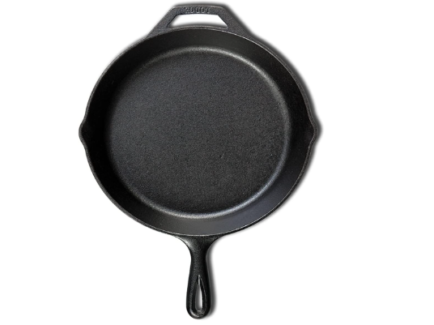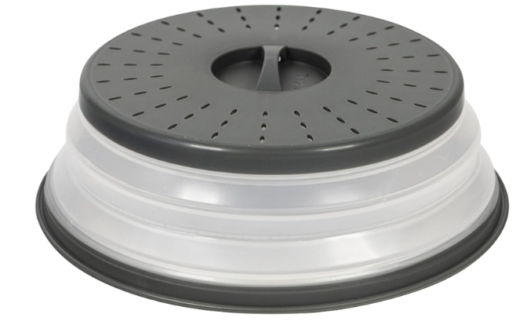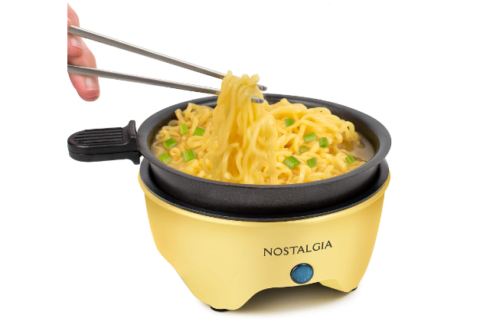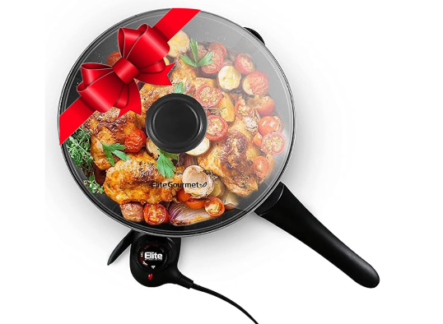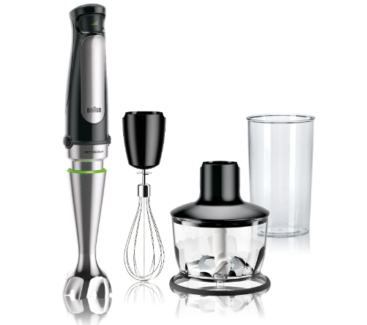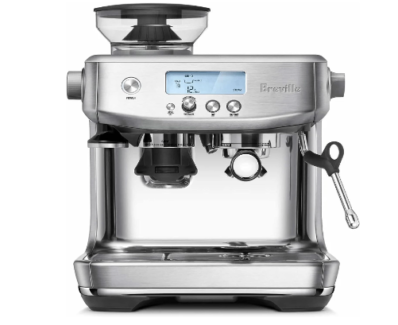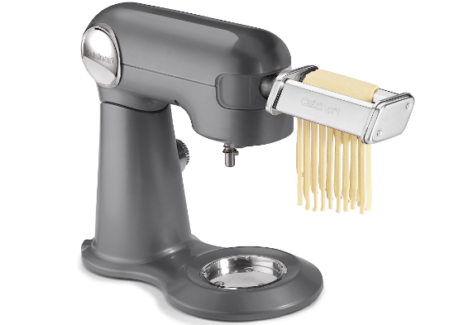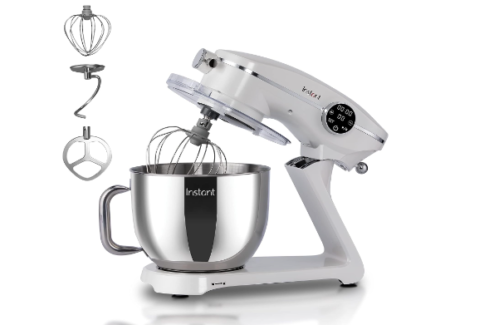Enjoy crisp, delicious Belgian waffles made in your own kitchen...
Read More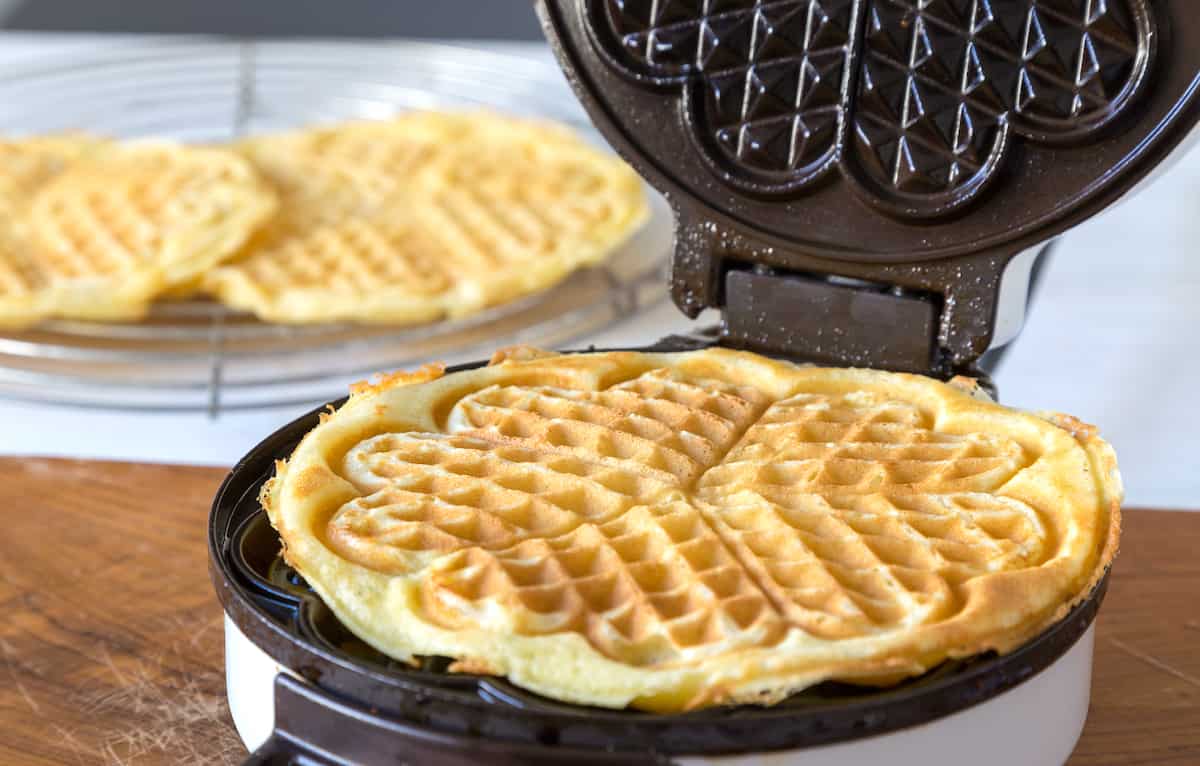
Thin waffles, also known as “crispy waffles” or “French-style waffles,” are a type of waffle characterized by their thin and delicate texture. Unlike Belgian waffles or regular waffles, which are thicker and have deeper pockets, thin waffles have a more uniform thickness throughout and a crisp exterior.
These waffles are typically made using a batter that is lighter in consistency compared to other waffle types. The batter is spread thinly onto the waffle plates of a specially designed thin waffle maker or iron. The result is a waffle that is crispy and light, with a delicate crunch when bitten into.
Thin waffles are popular in various European countries, including France, Belgium, and the Netherlands, where they are often enjoyed as a breakfast or dessert item. They are versatile and can be served with a wide range of toppings, such as powdered sugar, fruit, whipped cream, syrup, or even savory options like cheese or ham.
Due to their thin nature, these waffles cook relatively quickly compared to thicker waffle varieties. They are a great option for those who prefer a lighter and crisper waffle experience. Whether you enjoy them plain or topped with your favorite accompaniments, thin waffles offer a delightful and delicate treat.
What is a thin waffle called?
A thin waffle is commonly referred to as a “crispy waffle” or a “French-style waffle.” These names highlight the defining characteristics of this type of waffle, which are its thinness and the crisp texture it possesses. The term “thin waffle” is also used to describe this style of waffle, emphasizing its slim profile compared to thicker waffle variations like Belgian waffles or regular waffles.
Can you make thin waffles in a Belgian waffle maker?
Yes, it is possible to make thin waffles in a Belgian waffle maker, although the resulting waffles may not be as thin and crispy as those made in a specialized thin waffle maker or iron. Belgian waffle makers are designed to create thicker waffles with deeper pockets, but by adjusting the amount of batter used and spreading it thinly across the waffle plates, you can achieve a thinner waffle.
To make thin waffles using a Belgian waffle maker, you can try the following steps:
- Preheat the waffle maker according to the manufacturer’s instructions.
- Prepare your waffle batter. Consider using a lighter batter consistency by adjusting the liquid-to-dry ingredient ratio. Adding a bit more liquid or reducing the amount of flour can help create a thinner batter.
- Lightly grease the waffle plates with cooking oil or non-stick cooking spray.
- Pour a smaller amount of batter onto the center of the waffle plates compared to what you would use for a thicker Belgian waffle. Use a spoon or ladle to spread the batter thinly and evenly across the plates, covering most of the surface area.
- Close the waffle maker and cook the waffles according to the manufacturer’s instructions, typically for a slightly shorter time than you would for thicker waffles. Keep an eye on their color and texture to ensure they don’t overcook.
- Open the waffle maker when the waffles appear golden brown and crisp. Carefully remove them using a fork or spatula.
While making thin waffles in a Belgian waffle maker may not achieve the exact same level of thinness and crispiness as with a specialized thin waffle maker, it can still yield thinner waffles with a lighter texture. Experimenting with batter consistency and spreading techniques can help you achieve the desired thinness and crispness.
Which waffle maker makes the thinnest waffles?
The thinnest waffles are typically made using a specialized thin waffle maker or iron. These appliances are specifically designed to create thin and crispy waffles. While Belgian waffle makers and regular waffle makers produce thicker waffles with deeper pockets, a thin waffle maker is optimized for achieving the desired thinness.
There are various thin waffle makers available in the market, and their performance may vary. One popular type is the “Stovetop Thin Waffle Maker,” which is used on a stovetop burner. These waffle makers are often made of cast iron or aluminum and have a slim profile, allowing the batter to spread thinly across the cooking surface.
When choosing a thin waffle maker, consider the following factors:
- Size and Shape: Look for a waffle maker that suits your preferences in terms of waffle size and shape. Some thin waffle makers create rectangular-shaped waffles, while others produce round or square waffles.
- Material and Heat Distribution: Opt for a waffle maker that is made of a material known for even heat distribution, such as cast iron or aluminum. This ensures that the waffles cook uniformly and achieve a consistent crispness.
- Ease of Use and Cleaning: Consider the ease of use and maintenance of the waffle maker. Look for features like non-stick coatings or easy-to-clean surfaces that make cooking and cleaning a breeze.
- Durability and Reviews: Check customer reviews and ratings to get an idea of the durability and performance of the thin waffle maker you’re considering. This can help you make an informed decision.
While specific models and brands may vary, searching for a dedicated thin waffle maker, specifically designed to create thin and crispy waffles, will increase your chances of achieving the thinnest waffle results.
Are Belgian waffles thin?
No, Belgian waffles are not typically thin. In fact, Belgian waffles are known for their larger size and thicker profile compared to other types of waffles. They are characterized by their deep pockets and fluffy texture.
Belgian waffles are made from a batter that is typically yeast-leavened, resulting in a light and airy interior. The waffle plates of a Belgian waffle maker are designed to create deep pockets, allowing for better syrup and topping retention. The finished Belgian waffle is often thicker and has a substantial texture.
In contrast, thin waffles, also known as crispy waffles or French-style waffles, are much thinner and have a delicate, crisp texture. They are made using a lighter batter and cooked in a specialized thin waffle maker or iron.
While both Belgian waffles and thin waffles are delicious in their own right, they differ in terms of thickness, texture, and the type of waffle maker used to create them.
What is the average thickness of a waffle?
The average thickness of a waffle can vary depending on the specific type of waffle, personal preference, and the waffle maker used. Here are some general thickness ranges for common types of waffles:
- Belgian Waffles: Belgian waffles are known for their thickness. On average, they can range from about 1 to 1.5 inches (2.5 to 3.8 cm) thick. The deep pockets in Belgian waffles contribute to their height and fluffy texture.
- Regular Waffles: Regular or American-style waffles are thinner compared to Belgian waffles. They typically have an average thickness of around 0.75 to 1 inch (1.9 to 2.5 cm). Regular waffles still have a light and airy texture but are not as thick as Belgian waffles.
- Thin Waffles: Thin waffles, also known as crispy waffles or French-style waffles, are notably thinner than Belgian or regular waffles. They have a delicate and crispy texture. Thin waffles can range in thickness from approximately 0.25 to 0.5 inches (0.6 to 1.3 cm).
It’s important to note that these thickness ranges are approximate and can vary based on personal preference and the specific waffle maker used. Some individuals may prefer thinner or thicker waffles, and waffle makers may have settings or adjustments that allow for variation in thickness.
How do you thin out waffle batter?
If you have a waffle batter that is too thick and you want to thin it out, there are a few methods you can try:
- Add more liquid: The simplest way to thin out waffle batter is to add more liquid. This can be in the form of milk, buttermilk, water, or any other liquid specified in the recipe. Start by adding small increments, such as a tablespoon at a time, and mix well. Continue adding liquid until you reach the desired consistency. Be careful not to add too much liquid, as it can make the batter too thin and affect the texture of the waffles.
- Adjust dry ingredients: If you’ve already added the recommended amount of liquid but the batter is still too thick, you can try adjusting the dry ingredients. Gradually add small amounts of flour, starting with a tablespoon at a time, and mix well. Keep in mind that this method should be used cautiously, as too much flour can make the batter too thick and affect the taste and texture of the waffles.
- Incorporate more eggs or fat: Eggs and fat, such as melted butter or oil, can help to thin out the batter and create a smoother consistency. Adding an extra egg or a bit more fat can contribute to a thinner batter. However, be mindful that this method may also affect the flavor and texture of the waffles, so use it sparingly and adjust other ingredients accordingly.
Remember to adjust the other ingredients in the recipe accordingly to maintain the proper balance of flavors and proportions. It’s always best to make small adjustments gradually, mixing well after each addition, until you achieve the desired batter consistency.
Is waffle batter thinner than pancake?
In general, waffle batter tends to be thicker than pancake batter. The difference in thickness is primarily due to variations in the ingredient ratios and the desired texture of each type of batter.
Waffle batter typically contains more fat, such as melted butter or oil, which contributes to a richer and denser texture. It also often includes a leavening agent like baking powder or yeast, which helps the batter rise and create a light and fluffy interior. Additionally, waffle batters may require more eggs than pancake batters, further adding to their thickness and structure.
On the other hand, pancake batter is usually thinner and more pourable compared to waffle batter. It typically has a higher liquid-to-dry ingredient ratio, resulting in a runnier consistency. Pancake batter is designed to spread easily on a griddle or skillet, allowing for even cooking and the characteristic flat and round shape of pancakes.
While there can be variations in recipes and personal preferences, the general trend is that waffle batter is thicker and pancake batter is thinner. However, it’s worth noting that the exact thickness of both batters can be adjusted by adding or reducing certain ingredients, such as liquid or flour, to achieve the desired consistency.
How to make thin waffle in waffle maker
To make thin waffles in a waffle maker, you can follow these steps:
- Preheat the waffle maker: Start by preheating your waffle maker according to the manufacturer’s instructions. This ensures that the waffles cook evenly and achieve a crispy texture.
- Adjust the batter consistency: Thin waffles require a lighter and more liquid batter compared to thicker waffles. If your waffle batter is too thick, you can thin it out by adding a bit more liquid. This can be milk, buttermilk, water, or any liquid specified in your recipe. Gradually add small amounts of liquid and mix until you achieve a pourable consistency. Be careful not to make the batter too thin, as it may spread too much or become too fragile.
- Lightly grease the waffle plates: Apply a thin layer of cooking oil or use a non-stick cooking spray to lightly grease the waffle plates. This helps prevent the waffles from sticking to the plates and aids in achieving a crisp exterior.
- Pour the batter: Pour a suitable amount of batter onto the center of the preheated waffle maker. The exact amount will depend on the size of your waffle maker and the desired thickness of the waffles. Start with a smaller amount, as thin waffles require less batter than thicker waffles.
- Spread the batter: Use a spoon or spatula to quickly and evenly spread the batter across the waffle plates. Aim for a thin layer that covers most of the surface area without overflowing the edges. Work swiftly, as the batter will begin to cook as soon as it hits the hot plates.
- Close the waffle maker and cook: Close the waffle maker and allow the waffles to cook according to the manufacturer’s instructions. Cooking time may vary depending on the specific waffle maker and desired level of crispness. Keep an eye on the waffles and adjust the cooking time as needed.
- Remove the waffles: Once the waffles are golden brown and crisp, carefully open the waffle maker and remove the thin waffles using a fork or spatula. Place them on a wire rack or a plate to cool slightly.
Repeat the process with the remaining batter, ensuring that you re-grease the waffle plates as needed. Serve the thin waffles immediately or keep them warm in a low-temperature oven until ready to serve.
Troubleshooting about thin waffle
Here are some common troubleshooting tips for thin waffles:
- Waffles sticking to the plates: Make sure to properly grease the waffle plates with cooking oil or non-stick cooking spray before pouring the batter. If the waffles still stick, it could be an indication that the waffle maker needs to be seasoned or that the batter contains ingredients that are prone to sticking. Adding a little more fat to the batter, such as melted butter or oil, can help reduce sticking.
- Waffles not crisping up: Thin waffles should have a crispy texture. If your waffles are turning out soft or soggy, it could be due to a few factors. First, make sure that the waffle maker is adequately preheated before adding the batter. Insufficient preheating can result in waffles that don’t crisp up properly. Additionally, try adjusting the cooking time. Cook the waffles for a bit longer to achieve a crisper exterior. You can also experiment with using slightly less liquid in the batter or increasing the heat on your waffle maker.
- Uneven browning: If your thin waffles are not browning evenly, it could be due to uneven heat distribution in the waffle maker. To improve this, try rotating the waffle maker halfway through the cooking process to ensure even cooking on both sides. You can also check if the waffle plates are clean and free of any residue that may be affecting heat distribution.
- Batter spreading too much: Thin waffle batter should be pourable but not excessively runny. If the batter spreads too much in the waffle maker, it could be due to it being too thin. Adjust the consistency by adding a bit more flour to thicken it slightly. This will help the batter hold its shape and prevent it from spreading too thin.
- Waffles turning out too thick: If your waffles are still coming out thicker than desired, you may need to adjust the amount of batter you’re using. Try reducing the amount of batter poured onto the waffle plates and spread it thinly to achieve the desired thinness.
Remember that troubleshooting can involve some trial and error, as different waffle makers and recipes may require slight adjustments. Pay attention to the specific characteristics of your waffle maker and experiment with batter consistency, cooking time, and heat settings until you achieve the desired results.
Conclusion
In conclusion, thin waffles offer a different texture and taste compared to their thicker counterparts. They are known for their delicate and crispy texture, making them a popular choice for those who enjoy a lighter waffle experience.
To make thin waffles, it’s important to have the right batter consistency. The batter should be slightly thinner than that of regular or Belgian waffles. You can adjust the consistency by adding more liquid, such as milk or water, to achieve a pourable batter.
When using a waffle maker to cook thin waffles, ensure that the plates are properly greased to prevent sticking. Preheat the waffle maker adequately before pouring the batter, and spread the batter thinly and evenly across the plates. Cook the waffles until they are golden brown and crispy, adjusting the cooking time as needed.
If you encounter any issues while making thin waffles, such as sticking, lack of crispness, uneven browning, or batter spreading too much, you can troubleshoot by adjusting the greasing, batter consistency, cooking time, or heat settings of your waffle maker.
Experiment with different recipes, techniques, and adjustments to achieve the perfect thin waffle that suits your preferences. Whether enjoyed plain, topped with syrup and butter, or adorned with various toppings, thin waffles can be a delightful treat for breakfast or any time you crave a crispy, light waffle experience.
Related Posts
Krups Breakfast Set Stainless Steel Waffle Maker
Prepare up to four delicious Belgian-style waffles at a time...
Read MoreNinja BW1001 NeverStick PRO Belgian Waffle Maker
Meet the Ninja NeverStick PRO Belgian Waffle Maker. No mess,...
Read MoreWhy Trust Us
You will find what you are looking for at Jody's Bakery. From classic to luxury brands, you'll find both. We will help you to select appliances that fit your needs, budget and lifestyle. Whether you want to stop by to learn more — or plan to make a major purchase — we’ll treat you like family and assist you every step of the way. Shop with us today to receive friendly and experienced help along the way.










